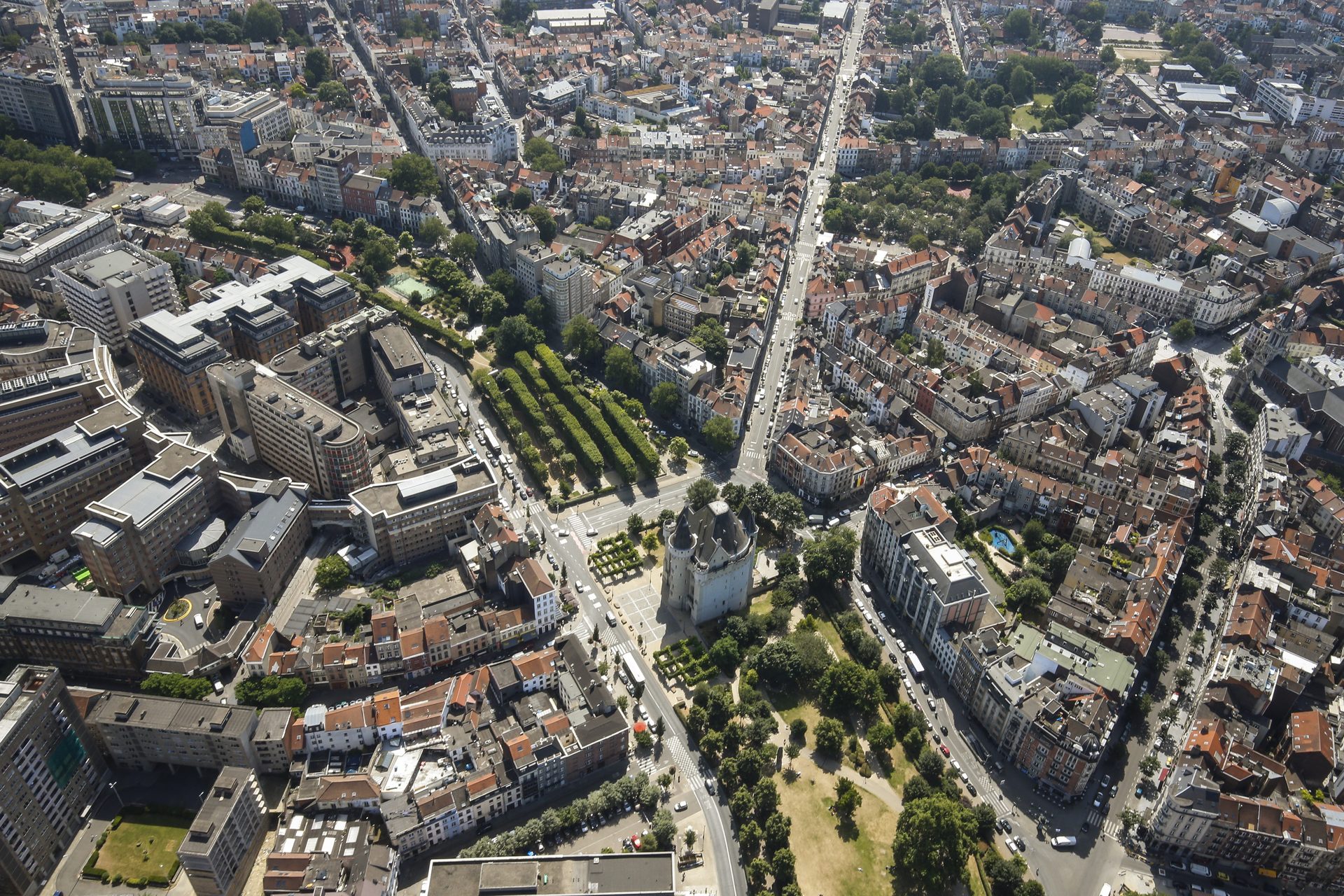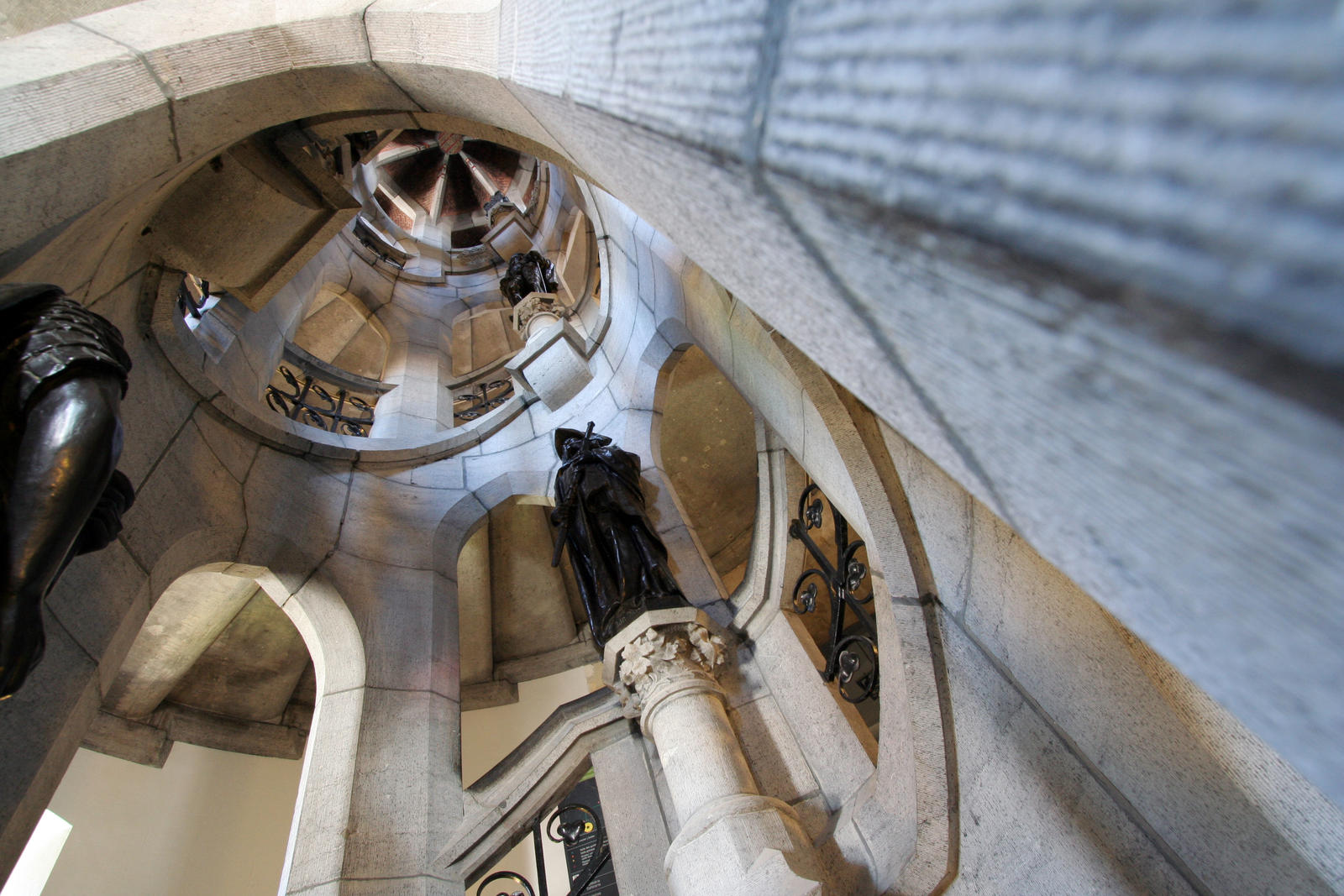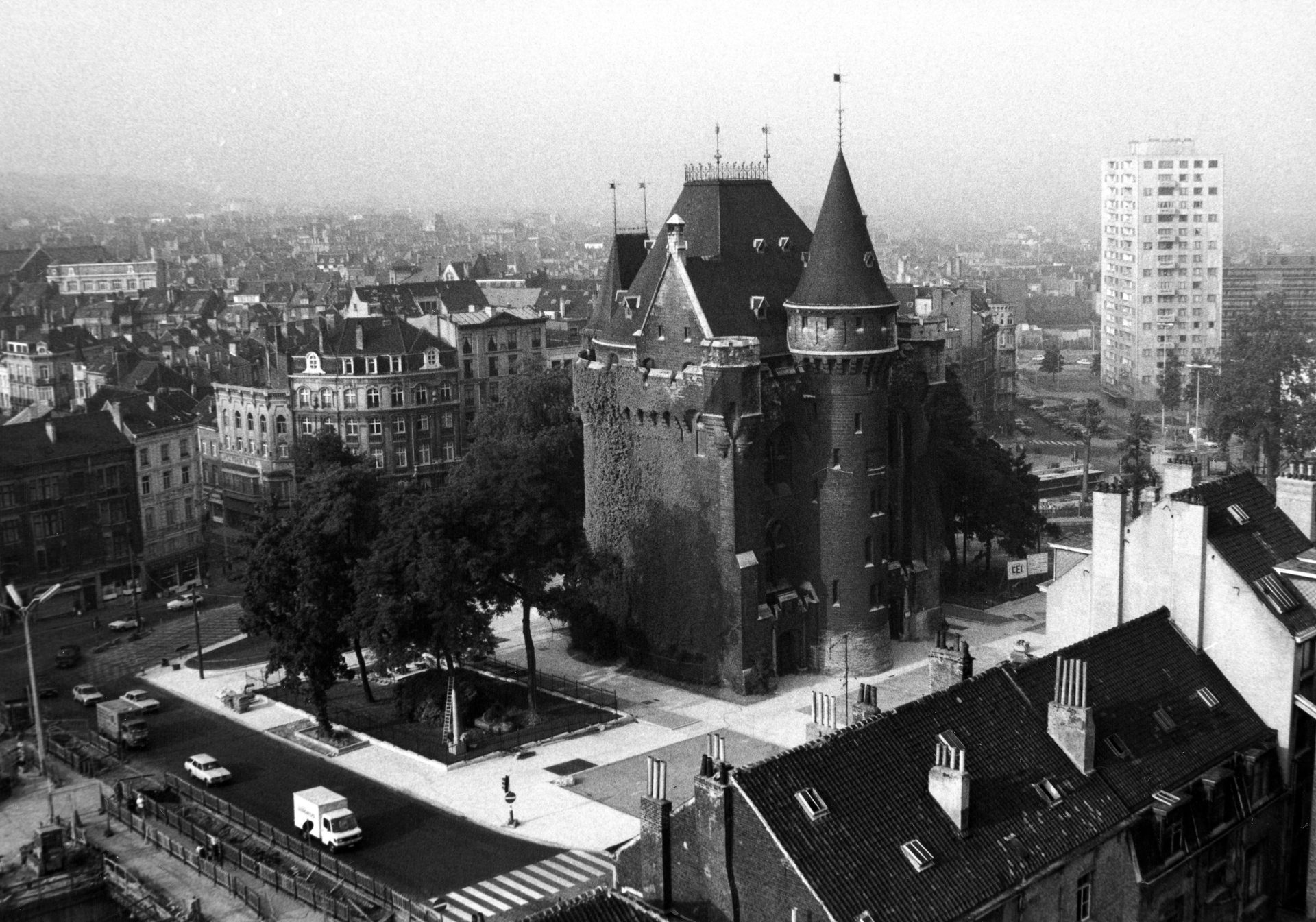The Brussels-Capital Region wants to "revive" the 14th-century Porte de Hal after launching a new project call-out for business and civil society. But there are growing concerns this may lead to the commercialisation of a listed building.
Witness to a time when Brussels was still a walled city, the Porte de Hal is the last remnant of the second city walls. Built between 1381 and 1383, it also served as a former prison and later became one of Belgium's first museums.
The tower's museum, now part of the Royal Museums of Art and History (KMKG), gives an overview of the rich history of the medieval building and its defences.
A must-see for history lovers, the Porte de Hal showcases Guilds of Brussels with harnesses, weaponry and folklore, while also outlining the history of the famous Brussels Ommegang, a medieval pageant that is celebrated annually in the Grand Place.

An aerial view of the Porte de Hal tower. Credit: Belga/ Thierry Roge
Since reopening in June 2008 after major renovation works, it has since been criticised as being outdated, and even lacking a vision or purpose. Yet the museum still welcomes a regular stream of visitors – some 18,500 visitors last year, more than the average recorded in the five years before the pandemic.
Despite the good attendance figures, the Brussels Government has launched a project call – it claims with a social and cultural focus – to enhance the monument's appeal. The move falls in line with KMKG's project to revamp the Cinquantenaire site for Belgium's bicentenary in 2030 and forms part of a wider new museum strategy.
However, the inclusion of commercial actors in the project appeal has raised concerns over the protection of the tower's historical value and heritage.
Allowing 'commercial exploitation'
In a statement, Secretary of State for Science Policy Thomas Dermine noted that the aim of the project call is to gather ideas and discover potential partners to "write the next chapter for the tower."
"We do not express any specific preference, hence the call. However, socio-cultural character and preservation of heritage value are important criteria. The Hall Gate remains a public place where people should be able to continue to congregate," Dermine's spokesperson told The Brussels Times.

Inside the Porte de Hal tower. Credit: Regie de Batiments
A survey has also been set up to allow citizens to voice their ideas on the future of the site, which include options such as "the museum function remains, but with different content." The Brussels Government insists that several criteria – including respect for the heritage value of the monument – will be taken into account.
"Together with a guidance committee of tourism and heritage experts, museum directors, a business manager and a professor of architectural history, criteria were drawn up, including the importance of heritage value."
However, the project call explicitly "does not exclude (partial) commercial exploitation," and is also inviting public authorities and private entrepreneurs to turn part of the building into accommodation (such as a hotel), a café, a restaurant or even an office space.
The fact that the top floor of the building serves visitors with a unique panorama over Brussels is further raising concerns that the space could be transformed into a rooftop. Meanwhile, the project calls wording, including phrases such as "a unique location in the middle of the ring road" – adds to its commercial tone.

Porte de Hal in 1984. Credit: Belga Archives
Brussels architect Thomas Greck has questioned the plans, noting that the call for projects seemingly "directs the future of the building towards a division of functions by floors", welcoming the catering industry or other profitable sectors. "This is a case to follow. We are talking about a 14th-century monument, which is sufficiently rare in Brussels," he argued.
Even before the project call was launched, Armel de Schreye, an Open VLD politician was concerned about the Federal Government's procrastination on the future of the medieval tower. "We noticed little interest so far," he says, adding that this "essential Brussels heritage" could soon be taken over by "real estate bigwigs, encouraged by flexible rules."
De Schreye is leading a bottom-up citizen movement to protect the site's heritage, with a petition said to be on the cards. With the help of local and historical associations, he heads a local committee that is aiming to win a concession, using crowdfunding, to enable the site to be run by a non-profit organisation.
Interested parties can submit an idea or express their interest via the online form until the morning of 1 September 2023, while it is hoped the concrete scenarios for the monument's future can be drawn up in the autumn.
The open call is part of a market exploration to then launch a targeted tender can be launched in the second phase. Residents and local entrepreneurs have also been invited to submit their thoughts on the project.

